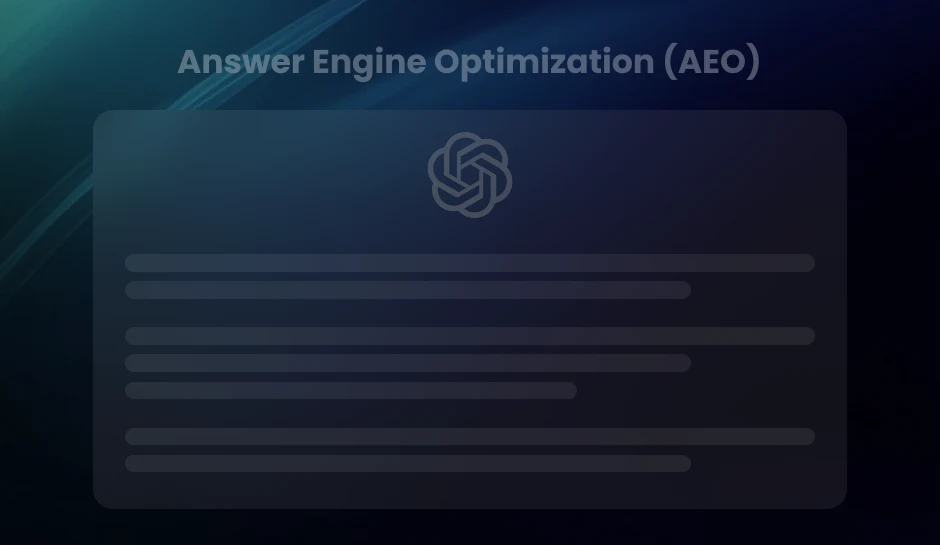
The Analytics Curve and the Power of Business Intelligence
Understanding the Analytics Curve is vital for businesses aiming to harness the power of their data effectively. his curve represents the progression from basic data collection to advanced analytics, with Business Intelligence (BI) as the starting point. Learn how BI guides organizations toward data-driven insights and informed decision-making.
Data has become the lifeblood of modern businesses. It is key to understanding customer behavior, optimizing operations, and gaining a competitive edge. However, navigating the vast ocean of information can be challenging sailing. There’s a crucial learning curve to overcome, and business intelligence (BI) serves as the captain’s compass, guiding organizations toward data-driven insights and informed decision-making.
This blog post will explore the intricacies of the analytics curve, highlighting the challenges and opportunities businesses encounter at each stage. We’ll then delve into the transformative power of business intelligence, revealing how it empowers organizations to unlock the true value of their data and chart a course toward long-term success.
Data Analytics – Moving Up the Curve
As businesses strive to turn data into a strategic asset, understanding and effectively moving up the analytics curve becomes pivotal. A transition from static data marks this evolution to actionable insights that drive informed decision-making practices.
The Transition from Mere Data to Actionable Analytics
Business Intelligence (BI) may lay the groundwork, but data analytics propels an organization’s data journey forward. It’s the art and science of examining data sets to conclude, often aiding management, operations, and strategy. Upgrading from BI to sophisticated analytics means going beyond observing static reports to uncovering trends that inform future actions.
Differentiating BI from Data Analytics in Practice
Descriptive Analytics: What Happened?
In the initial phase, descriptive analytics provides a retrospective view of business operations by answering the ‘What happened?’ It involves data aggregation and mining techniques to track KPIs and identify standard operational trends.
Diagnostic Analytics: Why Did It Happen?
Taking a step further, diagnostic analytics tackles the ‘Why did it happen?’ by focusing on cause-and-effect relationships. Tools like drill-down, data discovery, and correlations are fundamental in uncovering the reasons behind particular trends or issues.
The Role of Data Analytics in Decision-Making Processes
Data analytics seamlessly integrates into decision-making, allowing organizations to transition from instinctive to informed decisions. Its integration within the decision-making framework empowers leaders to answer critical business questions with precision and predict the impact of potential decisions on future outcomes.
- It democratizes access to data insights, fostering a culture of evidence-based decision-making.
- Enables predictive and prescriptive analytics, unlocking foresight and proactive adjustments in strategy.
- Transforms raw data into a narrative that guides stakeholders through complex scenarios.
Leveraging Performance Metrics and KPIs
Understanding and effectively leveraging performance metrics and Key Performance Indicators (KPIs) is critical to precisely navigating the analytics curve. As businesses become more data-driven, the ability to interpret and act upon these metrics can distinguish between a thriving enterprise and one that falls behind.
Understanding Performance Metrics within the Analytics Curve
Performance metrics are vital signposts on the path of data analytics. They provide quantifiable data that reflects the company’s performance in various areas. By integrating these metrics within the analytics curve, organizations gain nuanced insights into operational efficacy, customer satisfaction, and competitive positioning.
The Significance of KPIs as a Navigational Tool
KPIs serve as navigational tools that guide businesses towards their strategic objectives. These indicators are not just numbers but are intricately linked to the organizational vision and mission. When carefully selected and aligned with business goals, KPIs clarify what success looks like and how to measure it effectively.
Setting the Right KPIs: A Strategic Approach
- Identifying the most impactful areas of business to monitor
- Aligning KPIs with long-term objectives and short-term tactics
- Ensuring that KPIs are actionable, providing clear direction for improvement
KPIs as a Measure of Progress and Performance
KPIs are the quantifiable measures that articulate the company’s success in achieving its goals. They act as a barometer of progress, providing a real-time snapshot of performance against benchmarks and alerting management to areas requiring attention. Therefore, by continually monitoring KPIs, businesses can maintain a steady hand on the analytics curve, ensuring that every decision is data-informed and strategically sound.
Mastery and the Learning Curve
Associating the Learning Curve with Analytics Proficiency
Proficiency in analytics involves more than just exposure to tools and techniques; it involves a deep, intuitive understanding of data. In this context, the learning curve represents the time and effort it takes for a professional to progress from novice to expert. Organizations that invest in analytics education for their teams can accelerate movement along the learning curve, leading to a more adept analytics workforce.
Analytical Skill Development for Better Insights
Developing analytical skills is not an end but a means to achieving sharper, more nuanced insights. Strong analytical skills enable professionals to decipher complex data patterns, predict trends, and make strategic decisions. Thus, skill development should focus on practical application and strategic thinking to extract the maximum value from data.
Data Visualization
Data visualization transforms the analytics curve, enabling organizations to distill large datasets into actionable insights. By graphically representing data, businesses can more easily identify trends, patterns, and outliers that might be overlooked in traditional reports.
The Transformative Power of Data Visualization on the Curve
Data visualization is not just about making charts and graphs; it’s about unlocking the story your data tells. A well-crafted visualization is a tool for understanding complex relationships, illuminating the analytics curve to reveal critical insights that drive strategic decision-making.
Information Interpretation through Visual Storytelling
Visual storytelling turns raw data into a narrative that can be understood at a glance. This approach to information interpretation helps stakeholders across all levels of an organization to grasp sophisticated analytics without needing specialized training to interpret intricate datasets.
Choosing the Right Visual Tools
- Identify the audience:
- Determine the data characteristics:
- Assess the message:
- Evaluate usability:
- Explore options:
Understanding who will be consuming the visualizations is essential. Different stakeholders may have varying levels of technical expertise and preferences for presentation styles.
Consider the nature of the data being analyzed, such as its volume, complexity, and structure. Certain visualizations may be more suitable for displaying time-series data. In contrast, others may be better for categorical or spatial data.
Clearly define the insights you want to communicate with the visualizations. Are you highlighting trends, comparing categories, or showing relationships between variables? Align the choice of visual tools with the intended message.
Prioritize visual tools that are user-friendly and intuitive to navigate. Look for features that allow for interactivity, customization, and ease of sharing or exporting the visualizations.
Take advantage of the wide range of visual tools available, including charts, graphs, dashboards, and mapping software. Experiment with different tools to find the ones that best suit your analysis requirements and preferences.
Enhancing Comprehension and Swift Decision-Making
Using clear and compelling visuals, data visualization fosters an environment where comprehension is enhanced, and decisions can be made more swiftly and confidently. In the fast-paced business world, the efficiency brought about by data visualization can be a significant competitive advantage.
- Ease of Understanding:
- Pattern Recognition:
- Interactive Exploration:
- Communication Efficiency:
Complex data is distilled into visuals easier to grasp than spreadsheets or reports.
Trends and correlations surface naturally, guiding analytics-driven actions.
Dashboards allow users to drill down and interact with data, leading to deeper insights.
Visuals quickly communicate key findings to stakeholders, regardless of their data literacy levels.
Predictive Analytics – Anticipating the Trajectory
Predictive Analytics marks a significant milestone on the analytics curve, positioning it as a critical component of strategic decision-making in modern businesses. By harnessing the power of forward-looking analytics, organizations can shift from reactive decision-making to a proactive strategic direction, giving them a significant competitive edge.
Predictive Analytics as a Curve Milestone
At this stage of the analytics curve, companies move beyond interpreting past data and toward predicting future trends. Predictive analytics incorporates various statistical, modeling, data mining, and machine learning techniques to analyze current data to make predictions.
How Forward-Looking Analytics Influences Strategic Direction
Leaders in various industries rely on predictive analytics to shape their strategic roadmap. It enables executives to anticipate market shifts, customer behavior, and potential risks, thus providing valuable insights for long-term strategic planning.
Mining Data for Predicting Trends
Mining datasets for patterns, correlations, and trends is fundamental in predicting future outcomes. These insights are crucial for organizations to understand and adapt to change before it occurs, allowing them to allocate resources more effectively and minimize risks.
Using Predictive Models to Benefit Organizational Foresight
Predictive models are tools that transform data into actionable predictions. These predictions inform plans and actions that prepare businesses for the future. By applying these models, organizations develop a form of foresight, enabling them to position themselves favorably in the face of up-and-coming market and industry developments.
- Identification of trends before they become mainstream
- Customization of services or products for emerging consumer needs
- Optimization of supply chain efficiently ahead of demand curves
- Reduction of risk exposure through early identification of potential issues
Statistical Analysis – Ensuring Accurate Interpretation
Statistical analysis stands as a pivotal component in the hierarchy of data-driven decision-making. Its crucial role extends beyond mere number crunching; it is the linchpin for validating data integrity and anchoring analytics firmly in reality. Applying rigorous statistical methods ensures that conclusions drawn from analytic processes are intuitive and empirically sound.
The Crucial Role of Statistical Analysis in Validating Data
Raw data can often be misleading; it is through the meticulous application of statistical analysis that data reveals its true story.
Validating data involves:
- A comprehensive understanding of the population sample.
- Applying appropriate tests.
- Eliminating biases collectively serves to crystallize the accuracy of insights gleaned from any dataset.
Ensuring the Integrity and Reliability of Analytic Results
Without the assurance of integrity and reliability, analytics could lead businesses astray. Adopting statistical analysis fortifies analytic results, ensuring they are consistently reproducible under similar conditions and can be trusted to guide critical business strategies. This foundation of trust is indispensable for organizations that rely on data to navigate the ever-shifting sands of their respective industries.
Addressing Statistical Significance and Errors
One of the chief concerns within statistical analysis is the concept of statistical significance. It delineates the boundary between random chance and a true effect within the data. By addressing statistical significance, analysts can make informed decisions about the worthiness of their results. Furthermore, understanding the potential for errors – both Type I and Type II – equips analysts with the tools to mitigate misleading conclusions, thus preserving the integrity of the analytical exercise.
Transforming Raw Data into Valuable Information
The ultimate goal of statistical analysis in the context of the analytics curve is to transform raw data into valuable information. By employing properly validated statistical methods, businesses understand what has happened and why it happened, leading to a robust foundation for future forecasting and strategy. Statistical analysis breathes life into numbers, transforming them into narratives that drive decisive action and create competitive advantage.
Growth Analysis – Scaling the Curve
As businesses evolve, understanding growth dynamics becomes paramount. Scaling the Analytics Curve is about climbing and sustaining, and supporting that growth with informed decisions.
Evaluating Your Position on the Analytics Curve Through Growth Analysis
Growth analysis starts with a clear evaluation of where you stand on the path of analytical maturity. By assessing your current use of data analytics, you can understand your organization’s capability to handle and glean insights from data – this acts as a baseline for improvement.
Utilizing Growth Analysis to Identify Opportunities and Threats
A thorough growth analysis helps pinpoint opportunities to capitalize on and threats to mitigate. It involves examining market trends, customer behavior, and operational efficiency to guide strategic decisions.
Understanding the Growth Trajectory
Comprehending your growth trajectory is vital to foreseeing potential plateaus or declines. A deep dive into the trajectory allows you to set realistic growth targets and align your resources and efforts accordingly.
Data-Driven Strategies for Scalable and Sustainable Growth
The goal is to achieve scalable and sustainable growth. Leveraging growth analytics paves the way for robust, data-driven strategies that adapt to changes in the business environment while maintaining an upward trend on the Analytics Curve.
Customer Analytics – Perfecting the Curve
At the peak of the Analytics Curve, we find Customer Analytics. This pinnacle of data-driven strategy showcases businesses’ capability to focus on the most vital element of their success—the customer. Customer Analytics embodies the ultimate utilization of data to enhance every stage of the customer journey.
Using Customer Analytics to Manage Relationships and Drive Sales
In an ever-competitive marketplace, maintaining strong customer relationships is critical. Customer Analytics offers a fine-grained view of consumer behavior, preferences, and feedback. These insights empower businesses to craft personalized experiences, improving customer retention and increasing sales. Companies that leverage Customer Analytics witness their customer-related strategies becoming more aligned with customer desires, fostering loyalty and exploiting new opportunities for revenue growth.
Segmenting Data for Targeted Approaches
Knowing your audience is good, but understanding its different segments is even better. Utilizing Customer Analytics for data segmentation allows you to divide your customer base into distinct groups based on shared characteristics. Firms can tailor their marketing efforts, product development, and service offerings to meet the unique needs of each segment, hence driving a more effective and targeted approach to business growth.
Leveraging Insights for Improved Customer Service and Satisfaction
Insights drawn from Customer Analytics are not just about selling more—they’re about servicing better. These insights enable businesses to pinpoint areas of customer service that require enhancement. Addressing these issues directly improves customer satisfaction. Through detailed analytics, companies can now anticipate needs, personalize interactions, and respond swiftly to customer inquiries, thus improving the overall quality of service and securing the loyalty of the customer base.
Key Takeaways
- Recognize the evolution from basic data collection to advanced analytics, with BI as your guiding compass.
- Harness the power of data analytics for actionable insights, progressing from descriptive to predictive and prescriptive analytics.
- Utilize performance metrics and KPIs as navigational tools, aligning them with your goals to monitor progress effectively.
- Embrace continuous learning in analytics to stay adaptable and make informed decisions, ensuring a competitive edge in a changing landscape.
Conclusion
The relentless pursuit of growth and a competitive edge hinges on one crucial skill: mastering the analytics curve. This journey starts with collecting raw data, but true mastery lies in transforming it into actionable insights through Business Intelligence (BI). By leveraging BI, organizations can unlock the power of data analytics, gleaning insights that inform strategic decision-making, optimize performance, and propel them toward sustained success.
Ready to master the analytics curve and unlock your growth potential? Talk to Us!
Just write to us at info@diggrowth.com to learn how we can help.
Ready to get started?
Increase your marketing ROI by 30% with custom dashboards & reports that present a clear picture of marketing effectiveness
Start Free Trial
Experience Premium Marketing Analytics At Budget-Friendly Pricing.

Learn how you can accurately measure return on marketing investment.
Additional Resources
Don’t Let AI Break Your Brand: What Every CMO Should Know
AI isn’t just another marketing tool. It’s changing...
Read full post postFrom Demos to Deployment: Why MCP Is the Foundation of Agentic AI
A quiet revolution is unfolding in AI. And...
Read full post postAnswer Engine Optimization (AEO): The New Frontier of SEO in 2025
As digital experiences continue to evolve, so does...
Read full post postFAQ's
Business Intelligence (BI) primarily focuses on historical and real-time data analysis to generate reports and monitor business performance. On the other hand, data analytics involves analyzing data to uncover insights, patterns, and trends, often using advanced techniques to predict future outcomes and drive strategic decisions.
When selecting visual tools for your data, it's essential to consider various factors. Assess your audience's technical expertise and preferences, analyze the characteristics of your data (such as volume, complexity, and structure), and clarify the message you want to convey. Evaluate the usability of different tools, ensuring they are user-friendly and offer features like interactivity and customization. Finally, explore the available options, including charts, graphs, dashboards, and mapping software, to find the ones that best suit your analysis requirements and preferences.
Continuous learning in analytics is crucial for professionals to stay updated with the latest trends, techniques, and technologies. By continuously acquiring new skills and knowledge, individuals can adapt to evolving data landscapes, improve their analytical capabilities, and make informed decisions. This ongoing learning process enhances individual proficiency and ensures organizations remain competitive in today's rapidly changing business environment.
Statistical analysis validates data integrity, ensures insight accuracy, addresses errors, and transforms raw data into valuable information. It is a crucial component in data-driven decision-making processes.
 Rahul Sachdeva
Rahul Sachdeva  Shahzad Mussawir
Shahzad Mussawir 

